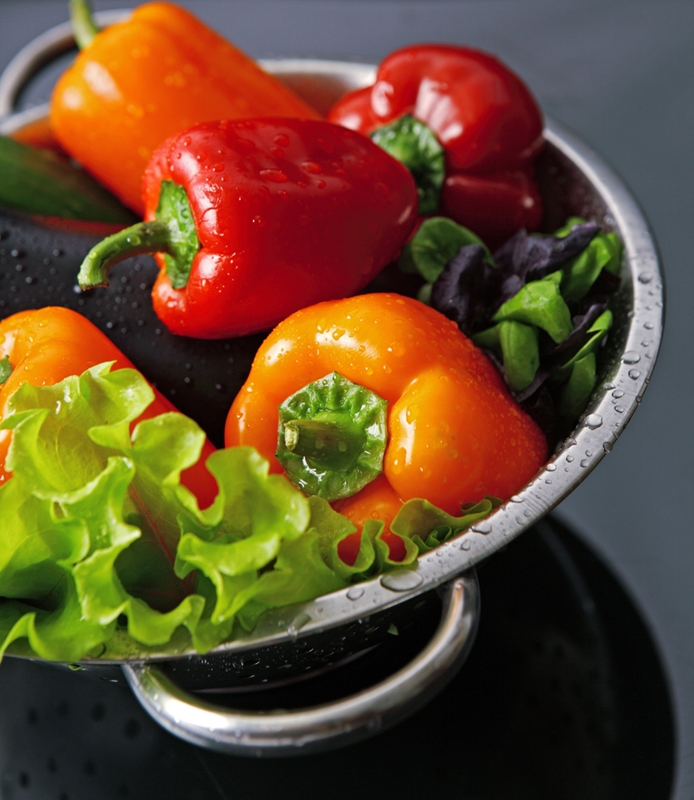Few things are as indicative of summer as eating outdoors. When the weather is this warm and sunny, people flock to picnics, cookouts and outdoor dinner parties. Day trips to the beach or going for a hike may require packing a bag of snacks to take along.
Whatever the occasion, eating outside can be a fun event, but it requires planning and proper accommodations. Otherwise, your memories of an entertaining summer gathering could become overshadowed by the days of stomach issues that could follow.
 Be mindful of how long you leave food out during your next outdoor meal.
Be mindful of how long you leave food out during your next outdoor meal.
Food Safety Concerns
Many of the foods we love to eat are favourites of a number of different bacteria as well. When stored and prepared properly, these microbes are destroyed, making the foods safe for people to eat.
When these food safety measures are not taken, however, the bacteria can thrive, often leading to infections. According to the Government of Canada, 4 million Canadians get a food-borne illness every year. More than 11,000 of those illnesses lead to hospitalizations, and over 200 result in death. Children, the elderly and the immunocompromised are especially vulnerable to severe consequences of food poisoning.
The top culprits of food-borne illness are:
- Norovirus. Norovirus infects more than 1 million people a year in Canada. These virus strains result in severe gastrointestinal distress, which can last for a few days. They're highly contagious and are often spread by contaminated foods that were handled by a person who had norovirus. The disease can then quickly spread from there.
- Clostridium perfringens. This bacterium accounts for 11 per cent of all food-borne illnesses in Canada each year. Unlike norovirus, it can't spread from person to person, but can easily spread among food. It grows quickly within temperatures of 20 C to 60 C.
- Campylobacter jejuni. This bacterium is spread through raw meat and animal products. It's easy to cross contaminate other foods with campylobacter jejuni, however, so it may spread through non-meat items. If ingested, it can lead to a number of infections throughout the body and can have lasting impacts on a person's health.
E. coli, salmonella and listeria are other common food-borne illnesses caused and spread by improper food handling and storage.
How to Keep Foods Safe
Following proper food handling and preparation procedures is the only way to reduce your risks of food-borne illness. These include:
Keeping foods cold: While food safety is a top concern year round, summer weather can make conditions especially supportive of bacteria growth, which thrives at room temperature, the Government of Canada reports. So when you have refrigerated side dishes sitting out at your backyard barbecue on a summer day, it takes even less time for them to heat up to dangerous levels.
Storing foods in a refrigerator or cooler at a maximum of 4 C is the best way to slow or stop this bacteria growth. Freezers, on the other hand, should be set to around -18 C. Generally, foods should not sit out for more than an hour.
Cooking foods thoroughly: Likewise, foods can be heated to safe temperatures as well, typically between 60 C and 75 C. According to the Canadian Partnership for Consumer Food Safety Education:
- Ground beef, pork, veal or pork should be cooked to 71 C.
- Ground turkey or chicken should be cooked to 74 C.
- Fresh pork should be cooked to 71 C.
- Fish should be cooked to 70 C.
- Shellfish should be cooked to 74 C.
- Eggs should be cooked to 74 C.
- Game should be cooked to 74 C
- Whole poultry should be cooked to 82 C.
- Rare steaks can be cooked to 63 C and well-done goes up to 77 C.
However, once these cooked foods reach room temperature, they become unsafe to eat again after sitting out for about an hour.
 Cut down contamination risks by washing produce before you serve it.
Cut down contamination risks by washing produce before you serve it.
Washing hands, tools and utensils: While certain foods are more prone to carry bacteria, it can be easy for other foods to become carriers through cross contamination. After handling susceptible products, like raw meat, be sure to wash your hands thoroughly with soap and warm water. You should also wash knives, cutting boards or counters that the food came into contact with. No other foods should touch any of the same surfaces unless they were disinfected first.
Store food properly: As the Food Network explains, you should use caution when storing and transporting food. Ensure raw meats are wrapped tightly and packed at the bottom of the cooler to prevent dripping and cross contamination. Keep food in the refrigerator as long as possible before putting in the cooler. Once your cooler is packed, try to limit the number of times you open it to help keep it colder, longer.
Food Network added that when dining outside, it's best to limit the amount of perishable foods you serve, rather than having to keep track of ensuring foods are at a safe temperature. Serve whole fruit instead of fruit salad to keep flies away and keep food covered when you're not serving yourself or in the process of eating.
By following these steps, you can be confident that your next outdoor meal will be safe to enjoy.